Selling art can be a thrilling and fulfilling experience, whether you’re a seasoned artist or an emerging creator. But as with any business, it can be a challenge to figure out where to start and how to find the right audience. With the advent of online marketplaces, such as Fine Art America and Saatchi Art, it’s easier to sell art online and overcome the usual struggles many new aspiring artists face when creating art, especially online. There are plenty of commissions that can greatly contribute to your income.
However, many artists wonder if selling art locally is still a viable and profitable option, despite how easy it is to sell online. Nowadays, you can get a professional website in minutes, add all the eCommerce functionality you need, and start selling online.
In this article, we’ll explore the pros and cons of selling your art locally and discuss whether it’s still a good strategy for independent artists.
- The Allure of Local Art Sales
- Is Selling Locally More Profitable Than Selling Online?
- Building Your Local Audience
- Local Galleries vs. Online Galleries: Weighing Your Options
- Don’t Forget Your Own Online Store: The Best of Both Worlds?
- Can You Make Money Selling Art Locally?
- Promoting Your Art: Online & In-Person
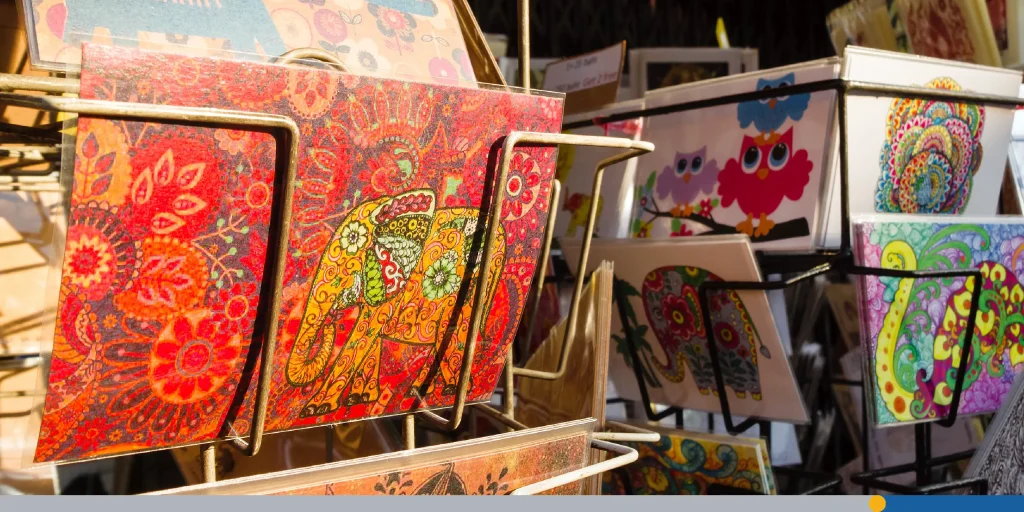
The Allure of Local Art Sales
Before diving into the potential profits, it’s important to understand why local sales are attractive in the first place. As an artist, your connection to your local art community can be incredibly valuable. It gives you a chance to engage with art lovers, art enthusiasts, and potential buyers face-to-face, encouraging a sense of connection and loyalty to your work. Selling locally allows you to form relationships with your audience and get immediate feedback on your art.
Moreover, community events like art fairs and local exhibitions offer an excellent opportunity for visibility. These events often attract art collectors, art enthusiasts, and even fellow artists who may be interested in supporting or purchasing your work.
If you’re creating art in a city or town that appreciates the arts, there’s a built-in potential audience right around the corner. But is it enough to make selling locally profitable?
Is Selling Locally More Profitable Than Selling Online?
While it’s true that selling online opens up a wider audience, selling locally can have its own set of advantages. The key question is whether these advantages outweigh the challenges. Here’s a comparison of the two approaches:
Local Art Galleries
- Overview: Local galleries can be an excellent way to showcase your original artwork. They often offer an avenue for artists to display their work in a professional setting.
- Pros: Galleries typically have loyal customers who are keen to buy art. If you’re able to find a gallery that specializes in your type of work, it can be a great way to connect with art collectors and gain visibility within your niche.
- Cons: Galleries usually take a commission from your sales (or they have booth pricing), which can eat into your profits. Plus, there’s the challenge of standing out among other artists vying for attention.
Art Fairs
- Overview: A more focused way to get your work in front of a local audience.
- Pros: You have the chance to interact directly with art lovers and sell original art or art prints. If you have a unique style or a signature product, you may attract attention. You also have the advantage of direct sales and the ability to talk to potential customers, explain the story behind your work, share gifts, and increase your popularity.
- Cons: You’ll have to pay for booth space. These events can be crowded, and standing out can become more difficult.
Selling Art Prints Locally
- Overview: One of the most straightforward ways to sell locally is by offering art prints—whether they are canvas prints, framed prints, or limited edition prints.
- Pros: Art prints allow you to create an unlimited number of copies of your original work, making it easier to sell more pieces. Selling high-quality prints can often be more profitable than selling the original artwork, since prints are typically more affordable for buyers. You can sell digital art prints or even digital downloads, making it easier to offer your work in different formats (such as greeting cards, tote bags, or phone cases).
- Cons: Initial printing costs, inventory management, or finding a reliable print-on-demand service if not printing yourself.
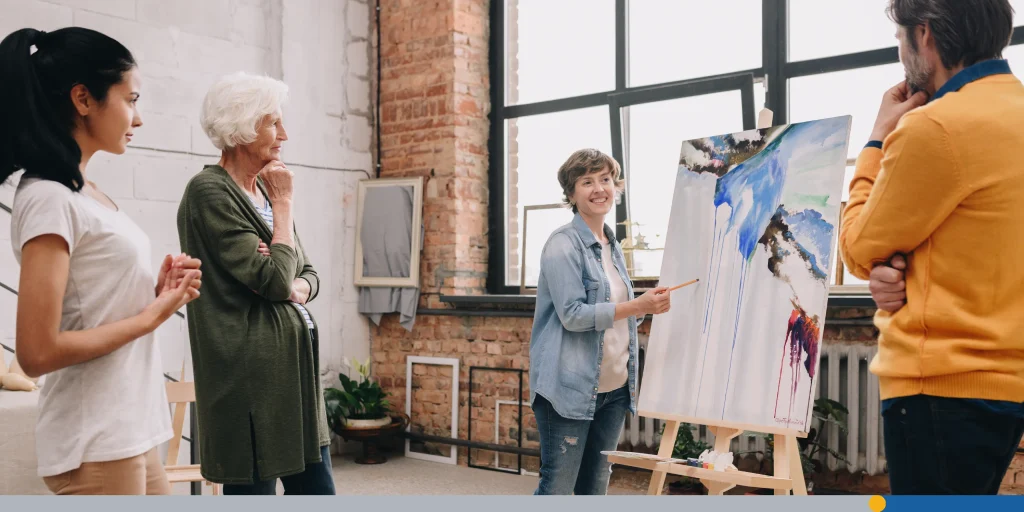
Building Your Local Audience
Making local art sales profitable hinges on actively cultivating your presence and understanding your community.
- Be seen at local events: Don’t just wait for opportunities; seek them out! Regularly participate in community festivals, local art fairs, pop-up shops, and gallery exhibitions. Consistent visibility builds recognition.
- Master local marketing: Think tangible and targeted. Professionally designed flyers, postcards, and posters highlighting your art and upcoming shows can be very effective when distributed strategically in local cafes, community centers, and shops.
- Local social media: Engage with local community Facebook groups, Instagram accounts that feature local happenings, and use location-specific hashtags.
- Network with fellow artists: The local art scene is a community, not just a marketplace. Connect with other artists. Collaborate on shows, share insights on what’s working, and cross-promote. This camaraderie can lead to unexpected opportunities and support.
Local Galleries vs. Online Galleries: Weighing Your Options
If gallery representation is a goal, you’ll likely consider both local and online options.
- Local galleries: As discussed, they offer a physical presence, a curated experience for buyers, and the potential for strong local collector relationships. The vetting process can be rigorous.
- Online galleries: Platforms such as Saatchi Art or Fine Art America provide a global storefront without leaving your studio.
- Pros: Massive reach, no need for physical inventory for some print-on-demand integrations.
- Cons: Can be highly competitive, with your art potentially lost in a sea of thousands of other artists. Commissions still apply, and you’re responsible for driving much of your own traffic to your listings unless you’re prominently featured. Building a strong online portfolio and marketing strategy is crucial.
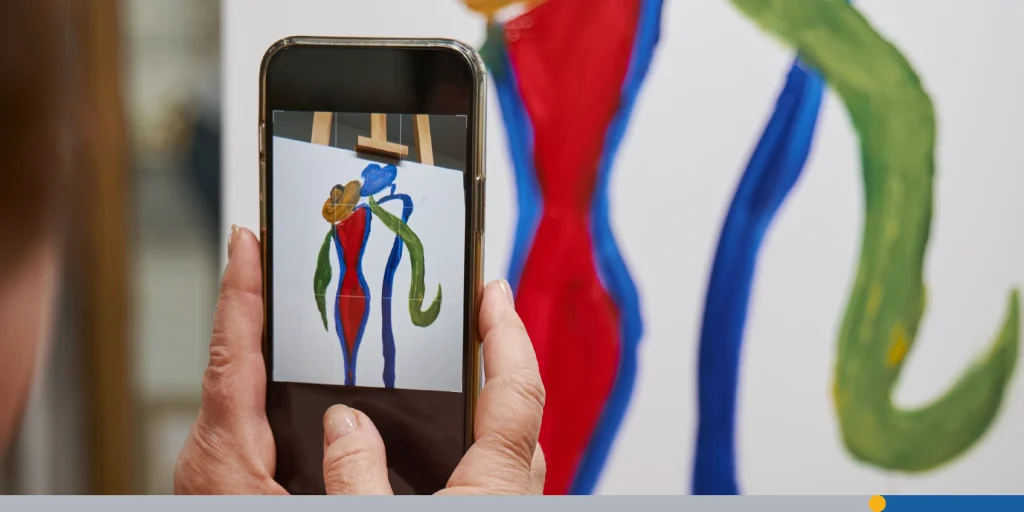
Don’t Forget Your Own Online Store: The Best of Both Worlds?
An excellent strategy is to complement your local efforts with your own online presence. Platforms like Shopify or Etsy allow you to create a personalized online store. Alongside these, services dedicated to branding, such as FreeLogoServices, can be instrumental in helping you establish a polished and professional brand identity to make your online venture truly shine. If you’re looking for an all-in-one solution, some of these branding services may also offer user-friendly website builders.
While creating an online presence for your own art, you also need a logo to ensure you grab the attention of those art lovers! Imagine if you could use an online logo maker for free to create your own designs, store them, and decide which to pick.
Here’s how this combined approach empowers you:
- Full control and professional branding: You set the prices and communicate directly with your customers worldwide. Critically, you control your branding. This is where establishing a memorable artist identity becomes vital. To achieve that polished and cohesive look across your platforms, consider designing a professional logo; services like FreeLogoServices, for instance, offer tools that can simplify this creative process, ensuring your brand stands out.
- Global reach, personal (and branded) touch: Promote your online store at local events! This is a perfect opportunity to hand out professionally designed items that direct people to your website. Think business cards featuring your new logo, which many artists find easy to design and order through the same type of services they might use for logo creation, such as FreeLogoServices.
- Versatility and extended product range: Easily sell original artwork, art prints (including high-quality limited editions), and even leverage print-on-demand services for items like phone cases, t-shirts, and canvas prints without upfront inventory costs. Beyond prints, services like FreeLogoServices can also help you expand your offerings by creating branded apparel or other marketing products that feature your unique art or logo, delighting your visitors and further extending your brand’s reach.
- Marketing power: Use email campaigns featuring your branded look, compelling product descriptions with detailed images, and social media (Instagram, Pinterest, Facebook) to drive traffic to your own digital storefront. A strong visual brand, consistently applied from your logo to your website and marketing materials (which tools and products from services like FreeLogoServices can help you develop and maintain), will make all your marketing efforts more impactful.
It takes time to build an online following, but your website, professionally branded and filled with your unique art, becomes your central hub. It’s accessible anytime, anywhere, and serves as a fantastic complement to your local sales efforts, helping you look credible and established both online and off.
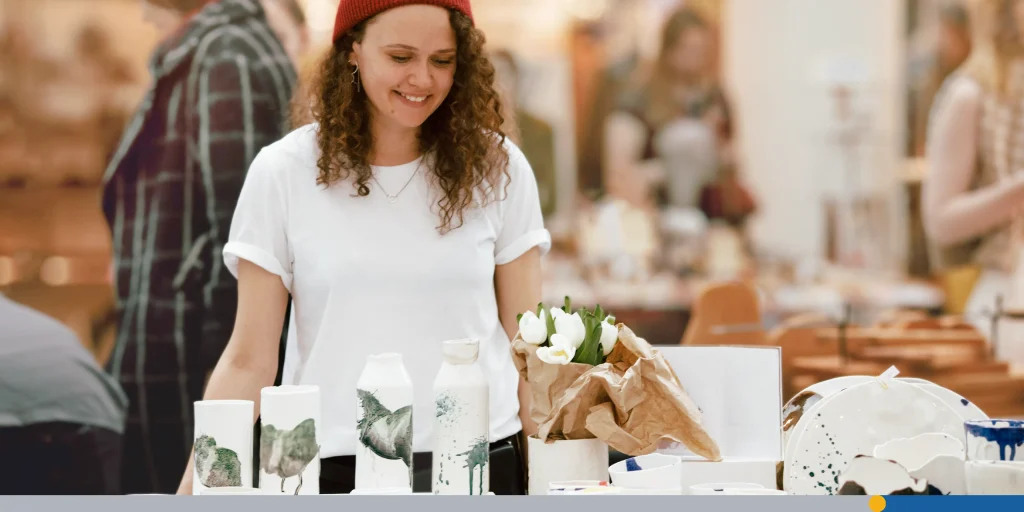
Can You Make Money Selling Art Locally?
Yes, you can! Many artists build fulfilling careers and make a good living primarily through local sales or a smart combination of local and online efforts.
Success often comes down to three things:
- Finding the right sales channels: What works for one artist might not for another. Experiment and see what resonates with your art and your community.
- Consistent engagement: Building relationships with your local audience takes time and effort.
- Smart pricing: Offering a range of products, like affordable art prints and digital downloads alongside higher-priced originals, can attract a broader spectrum of buyers.
While local sales might not always offer the instant global reach of online marketplaces, the power of community connection is undeniable. For many artists, this direct engagement is more rewarding than chasing purely online sales. The key is to remain versatile and open to multiple revenue streams.
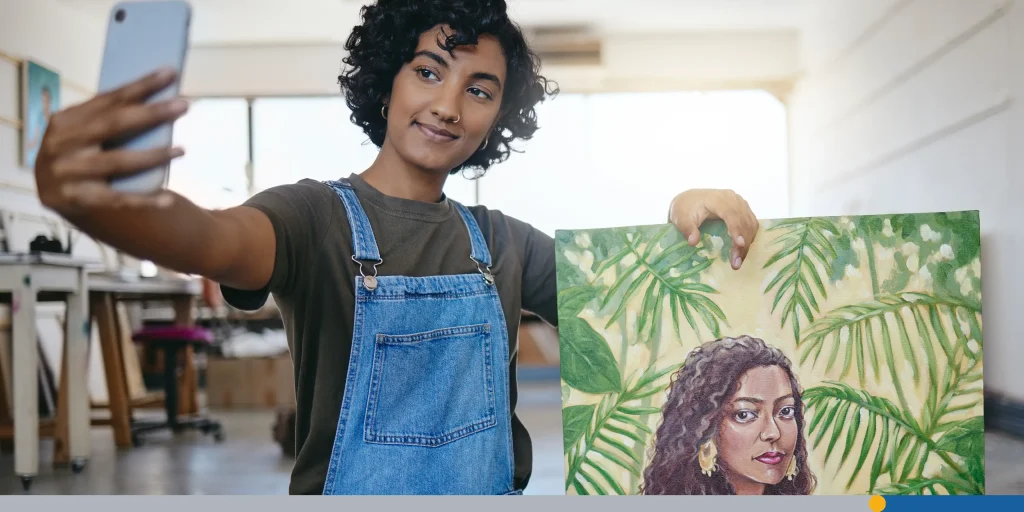
Promoting Your Art: Online & In-Person
Effective promotion is non-negotiable, whether you’re aiming for local fame or global reach. You need to get your art seen by the right eyes. The best strategy often involves a multi-pronged approach.
Promoting Your Art Online
The internet is a powerful tool for selling art to a global audience. With just a few marketing tools, you can set up an online portfolio, get discovered by art lovers, and drive sales. Here’s how you can do it:
Social Media Platforms
Social media is one of the most effective ways to promote your art. Platforms like Instagram, Facebook, Pinterest, and TikTok allow you to showcase your work, connect with art enthusiasts, and gain followers.
- Instagram is ideal for showcasing visual art through high-quality images or detailed images and videos of your work. It’s one of the most popular platforms for artists and a great place to build a following. Share behind-the-scenes content, stories, and posts to engage with your audience.
- Pinterest can drive traffic to your website or online store by allowing users to pin your art to their boards, which helps with exposure.
- TikTok is an up-and-coming platform for artists to share time-lapse videos of their creative process, which has become quite popular in the art community. You can host livestreams or announce simple giveaways to attract a larger audience.
Create an Online Gallery or Store
Having a personal website or online store is a fundamental way to showcase and sell your original artwork or art prints. You can use popular eCommerce platforms or even pick up your own domain to sell your work and create a cohesive online presence. When potential buyers visit your site, they’ll be able to browse your art, read your artist statement, and make purchases.
Use Online Marketplaces
Platforms like Saatchi Art, Fine Art America, Etsy, Facebook, and Instagram (for their shopping functionality) provide online galleries where you can list your work, reach global buyers, and get discovered. These usually offer a built-in audience, which can help emerging artists like you gain visibility.
Tip: Social media is an unsung hero for selling art online, and it could become quite profitable once a following is established.
Create an Email List & Newsletter
Building an email list of interested buyers is one of the most effective ways to keep your audience engaged and informed. Offer your website visitors the chance to subscribe to your newsletter for exclusive offers, early access to new art, or special promotions. This direct line of communication with your audience is invaluable.
Collaborate with Influencers or Art Bloggers
Teaming up with influencers, art bloggers, or even art collectors who have a solid following can help you get noticed. Ask them to feature your work on their social media or write a blog post about you and your process. This kind of exposure can reach audiences who might not have found you otherwise.
Use Paid Advertising
If you have the budget, using paid advertising on social media platforms like Instagram or Facebook can increase your visibility and target a specific audience. You can create ads that promote specific pieces of art, an upcoming show, or a limited edition print.
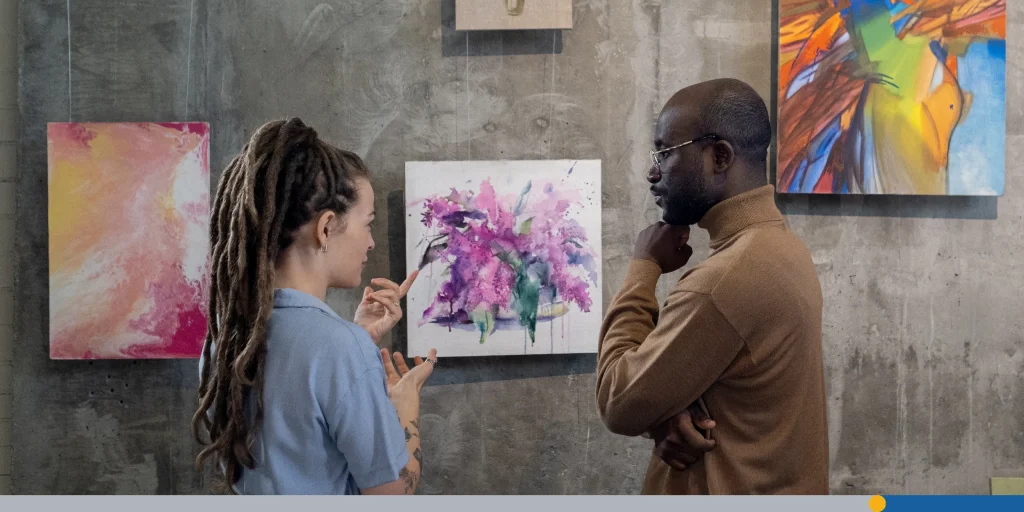
Promoting Your Art In Person
While online sales can give you access to a wider audience, in-person promotions can create lasting relationships with potential buyers and help you gain local recognition. Here’s how you can promote your work locally:
Participate in Local Art Fairs & Community Events
Local art fairs are an excellent way to promote your work directly to your local audience. These events give you the opportunity to set up a booth and interact with art lovers face-to-face. Bring marketing materials, such as flyers or postcards, so people can take a piece of your art home with them or visit your website later.
Host an Open Studio Event
Hosting an open studio event can be a great way to invite the local art community into your creative space. Offer tours of your studio, show new pieces, and offer refreshments. By opening your studio doors, you allow people to see your creative process, which can build personal connections and boost interest in purchasing your work.
Work with Local Art Galleries
If you’re new to selling art locally, partnering with local art galleries is a great way to get your foot in the door. A gallery’s art collectors and regular visitors can provide exposure to a highly targeted group of potential buyers. Though galleries take a commission, they bring credibility to your work and can introduce you to a loyal art community.
Engage in Public Art Projects
Consider participating in public art projects or community events like murals or art installations. These events can give you significant exposure and may lead to more art sales. Being seen in a public space can help establish your reputation as a prominent local artist.
Host Workshops or Classes
Offering art workshops or classes can position you as an expert in your field. It’s also a great way to build relationships with the local art community and show off your skills. By teaching others to create, you also expose your own work to potential buyers who are interested in learning from you.
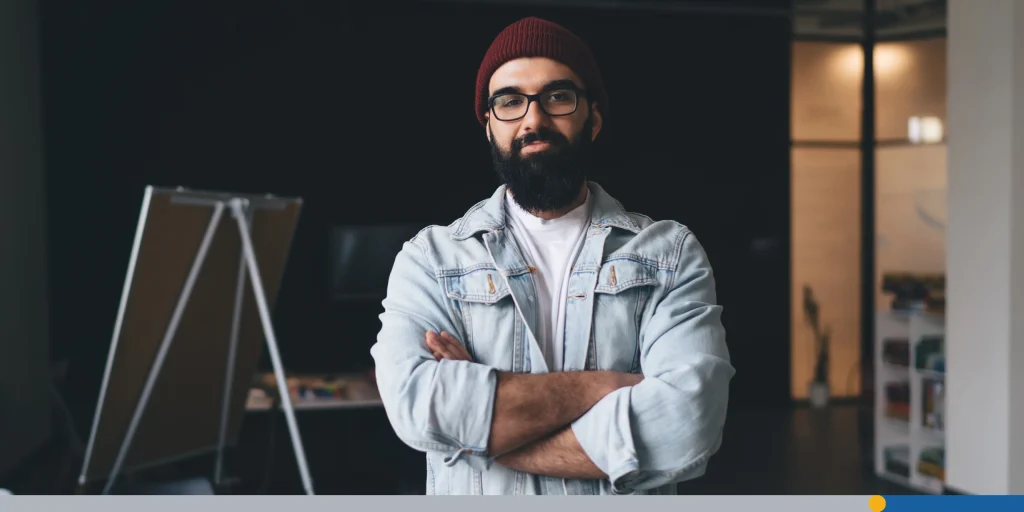
How to Stand Out
To make your promotions truly successful, you must ensure that your marketing efforts stand out. Whether online or in person, the way you present your art will determine how buyers perceive it.
- High-quality presentation: Use clear, professional, detailed images online. Ensure your physical work is well-finished and presented attractively.
- Tell your story: What inspires you? What’s your process? People connect with stories.
- Develop a recognizable brand identity: This doesn’t mean being rigid, but having a consistent style or theme can help people remember your work.
- Convey your unique value: What makes your art special? Communicate this clearly in your marketing materials and conversations.
Conclusion
Selling art locally is far from an outdated practice. It can be a highly profitable and deeply rewarding path, especially when you strategically tap into the right sales channels, actively engage with your local art community, and employ smart marketing.
Whether you choose the ambiance of local galleries, the bustle of art fairs, or the entrepreneurial spirit of your own online store (promoted locally!), the essence lies in staying true to your art, building genuine connections, and remaining adaptable.
Selling locally gives you the opportunity to nurture your craft and cultivate a loyal base of collectors and supporters. So, if you’ve been thinking about making money from your art, why not give selling locally a shot?
FREQUENTLY ASKED QUESTIONS
Can I make a full-time income selling art locally?
It’s possible to earn a full-time income, though it depends on factors such as your location, the demand for your work, and your ability to engage with the local community. It’s helpful to combine local sales with other sales channels, like selling prints or creating an online gallery.
How do I get started selling my art locally?
Start by researching local art fairs, galleries, and events where you can display your work. Network with fellow artists, create marketing materials, and engage with your local community to build recognition.
Should I sell originals or prints?
Both options have their advantages. Selling original artwork can be lucrative, but offering prints allows you to sell more affordable pieces and reach a wider audience. Consider offering both, with limited edition prints to maintain exclusivity.
How can I promote my art locally?
Use local social media platforms, participate in community events, and network with art lovers and art enthusiasts. Marketing materials like flyers and postcards can also help you get noticed in your local area.
Is selling art online better than selling locally?
Both have their pros and cons. Selling art online gives you access to a global audience, but selling locally can help you establish personal connections with buyers and art collectors. Combining both strategies might be the most effective approach.
What’s the best way to price my artwork for local sales?
Pricing can vary depending on your reputation, the materials used, and the market demand. Research what other artists in your area are charging and consider the time, effort, and costs involved in creating the piece. Don’t undersell yourself, but also remain competitive within the local market.
How can I build an online audience from scratch?
Building an online audience takes time and consistency. Regularly post engaging content on your social media, use relevant hashtags, interact with your followers, and collaborate with influencers or bloggers. Over time, these efforts will help grow your following and lead to increased sales.
Should I focus on selling original art or prints?
It depends on your goals and the market you’re targeting. Original art may appeal to art collectors, while art prints or digital downloads can attract a broader audience and generate more sales. Offering a combination of both can help you reach different types of buyers.
How do I get people to notice my art at local art fairs?
Make sure your booth is visually appealing with professional presentation and marketing materials. Offer something unique, such as limited edition prints or framed prints, to draw attention. Don’t be afraid to engage with visitors and explain your work and your process. Personal connections often lead to sales.
Can I sell my art locally while selling online too?
Absolutely! Many artists successfully sell both locally and online. In fact, combining both strategies allows you to tap into different audiences and increase your overall exposure. Ensure your online store and local events are aligned in terms of pricing and marketing to avoid confusion.
Do I need to be on all social media platforms to promote my art?
No, you don’t need to be everywhere. Focus on platforms where your target audience is most active. Instagram is ideal for visual art, while Facebook and Pinterest are also great for promoting and selling. Choose two or three platforms and stay consistent with your posts.
How can I make my artwork more attractive to buyers?
Focus on making your work stand out by highlighting its unique features. Create detailed images of your art, write compelling descriptions, and tell the story behind each piece. Additionally, offering products like greeting cards, phone cases, or tote bags with your art can help potential buyers connect with your brand.
How can I keep track of my sales and income from both local and online sales?
Use accounting software or a simple spreadsheet to track both local sales and online store transactions. This will help you understand your profits and areas where you may need to adjust your strategies.


